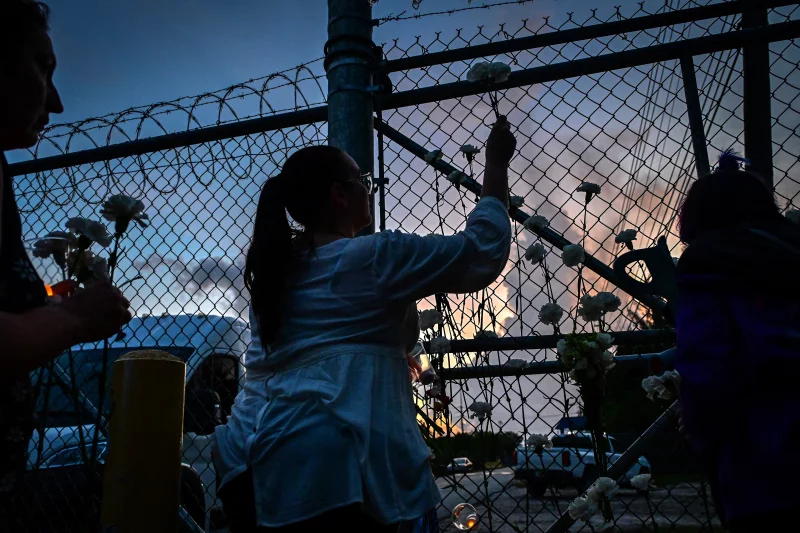Migrant detainees held at a U.S. immigration facility in Miami protested on Thursday over worsening conditions. The protest happened at the Krome Detention Center, where people in custody used their bodies to form the letters “SOS” in the courtyard. News helicopters filmed the scene, which quickly gained attention.
NPR reporter Jasmine Garsd has been covering problems at this center for months. She has spoken with many detainees and their families about how hard life is inside the detention center. One of the biggest issues right now is severe overcrowding, with ICE facilities across Florida holding more people than they are meant to.
Detainees have reported sleeping on the floor, going without food, and lacking medical care. One woman named Maria said her brother has had a serious eye infection and a fever for two weeks but has not received any treatment. She also said food is sometimes spoiled and many detainees are going hungry.
According to Setareh Ghandehari from Detention Watch Network, the problem is not just in Miami. ICE detention centers nationwide are now at about 125% capacity. She said people are “languishing” in poor conditions and some are even starving.
ICE responded to NPR, admitting there is overcrowding. They said they are trying to manage the situation while still meeting federal standards. ICE claims the problems do not match their policies and that the overcrowding is only temporary. But the government’s plans for more arrests may make the situation worse.
The Trump administration is focusing on self-deportation as a strategy to reduce overcrowding. Some detainees are now asking to be deported rather than stay in these harsh conditions. For example, 28-year-old Jhonkleiver Ortega from Venezuela has been in detention for six months. He told his mother he is tired of waiting and barely getting food, so he asked to be sent back home.
He also shared that his asylum case would take months more and require proof he was tortured. He was even told by a judge that if his deportation flight accidentally lands in another country like El Salvador, he can send an email to report it—showing how desperate and uncertain the process has become.
This protest highlights how bad things are getting in ICE detention centers. It also raises serious questions about how U.S. immigration policies are being handled and the human cost for those stuck in the system.

